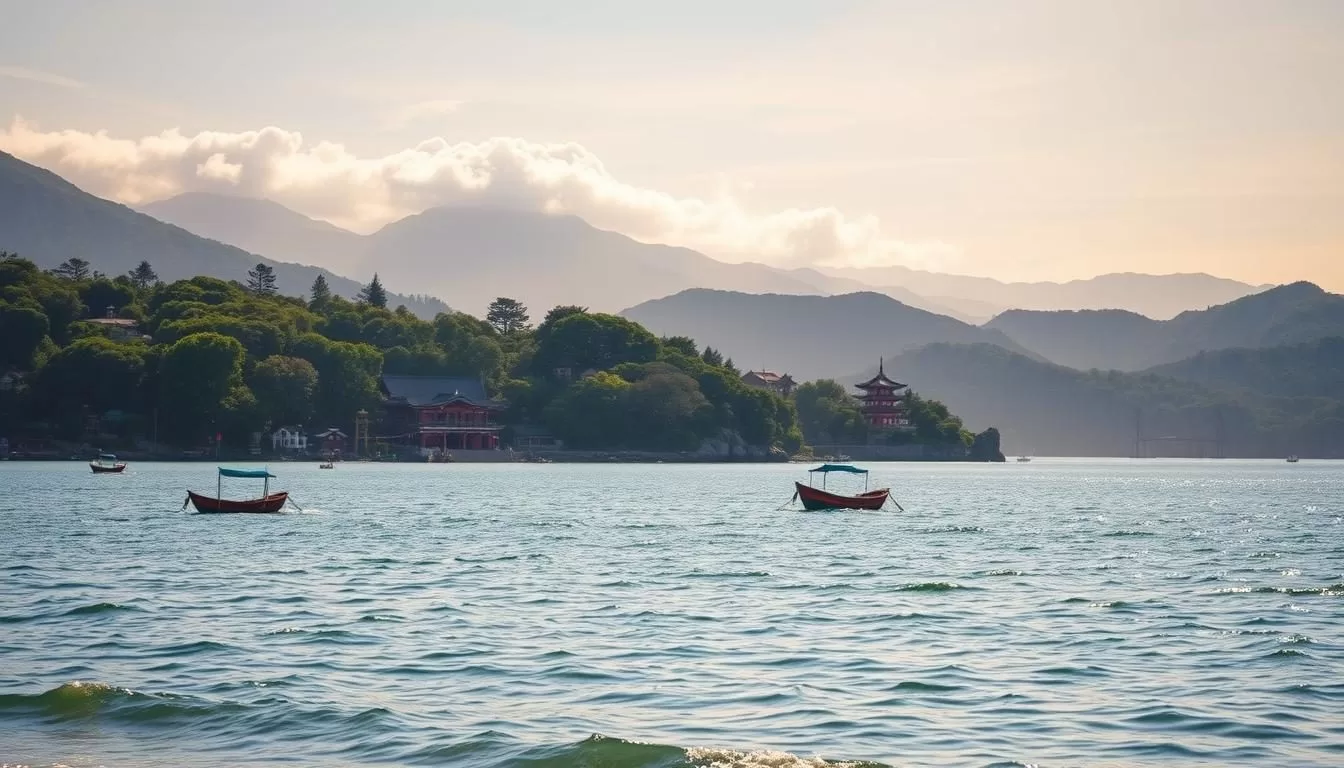✓ Accommodations✓ Flights✓ Rental Cars
Are you ready to explore one of Japan’s most authentic and rewarding travel destinations? Shikoku Island is a treasure trove of unique experiences, from historic castles to delectable local cuisine.
As Japan’s smallest main island, Shikoku may be often overlooked, but it packs a punch with its lush valleys, mystical mountain temples, and culinary delights like Marugame’s beef udon soup and Kochi’s katsuo served tataki style.
When planning your trip to Shikoku, consider the time of year and how to navigate the train and other transportation systems to make the most of your visit.
Discovering Shikoku: Japan’s Hidden Gem
If you’re looking for an off-the-beaten-path experience in Japan, consider Shikoku Island. This lesser-known destination offers a unique blend of traditional culture, stunning natural beauty, and exciting activities.
Getting to Shikoku Island
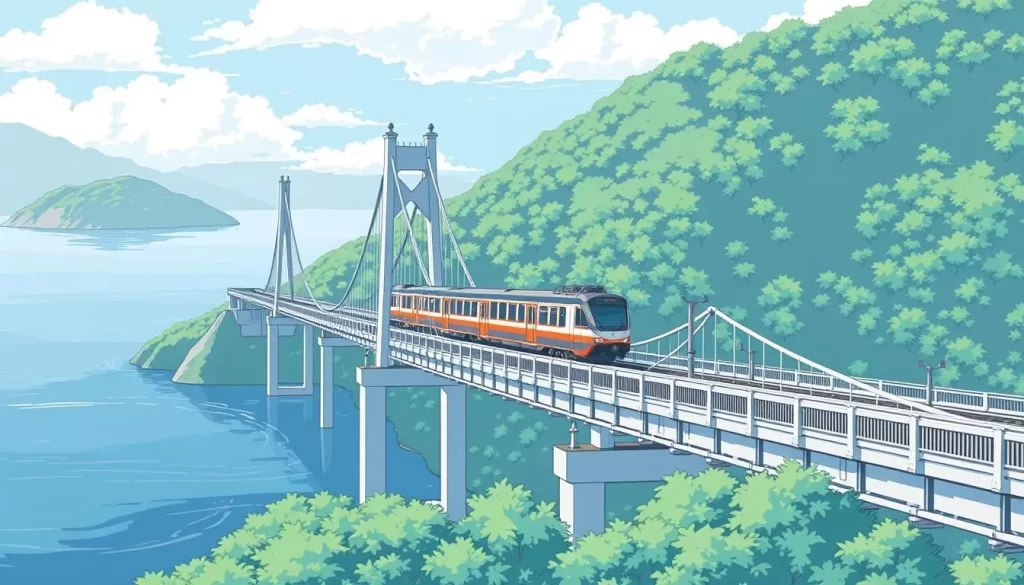
You can reach Shikoku by train via bridges connecting it to Honshu or by ferry from various ports. The island is accessible by domestic flights to Takamatsu, Matsuyama, and Kochi airports. Train routes from Okayama and Honshu via the Seto Ohashi Bridge provide a convenient entry point.
Best Time to Visit
The best time to visit Shikoku depends on your preferences. Spring (March-May) offers cherry blossoms, while summer features the famous Awa Odori festival. Autumn provides stunning foliage, and winter is mild but less crowded.
Transportation Options Around the Island
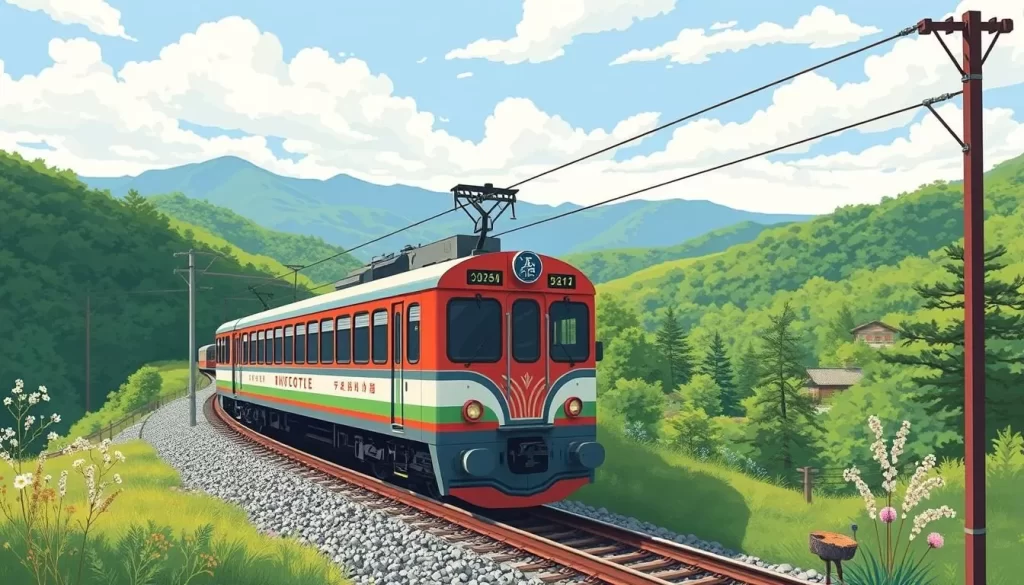
Shikoku doesn’t have bullet trains, so travel can be slower than in other parts of Japan. You can use public transportation, rent a car, or purchase the Shikoku Railway Trip pass for unlimited travel on JR trains. Local buses connect major attractions, but schedules can be limited, especially in rural areas.
Takamatsu: Gardens, Temples, and Culinary Delights
With its picturesque gardens, historic temples, and mouth-watering local cuisine, Takamatsu is an ideal destination for travelers seeking a well-rounded Japanese experience. The city’s charm lies in its ability to balance natural beauty with cultural significance, making it a highlight of any trip to Shikoku.
Ritsurin Garden: Japan’s Most Beautiful Landscape Garden
Ritsurin Garden, or Ritsurin Koen, is a masterpiece of Japanese landscaping, requiring at least 2 hours to fully appreciate its beauty. The garden is particularly stunning in the morning light, with its ponds, bridges, and tea houses creating perfect photo opportunities from every angle.
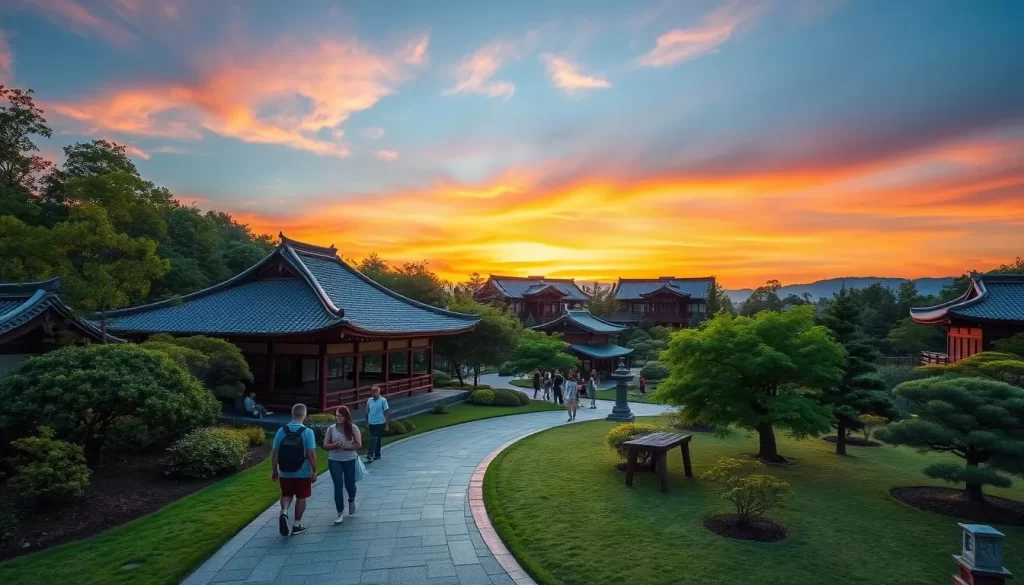
Kotohira-gu Shrine and Kompirasan
A day trip from Takamatsu to Kotohira-gu Shrine, also known as Kompirasan, is highly recommended. The shrine is reached by climbing 785 stone steps, a journey that rewards pilgrims with panoramic views and a profound spiritual atmosphere.
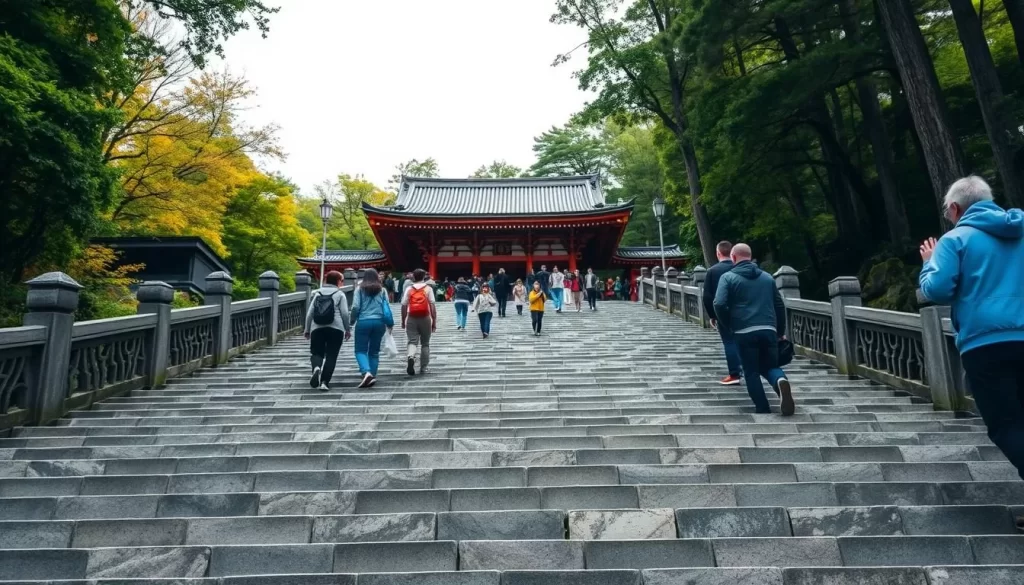
Udon Noodles: Sampling Kagawa’s Famous Sanuki Udon
No visit to Takamatsu is complete without sampling the local specialty, Sanuki udon noodles, known for their firm, chewy texture. The city is home to numerous restaurants serving authentic bowls of udon, with some of the best eateries located near Takamatsu Station.
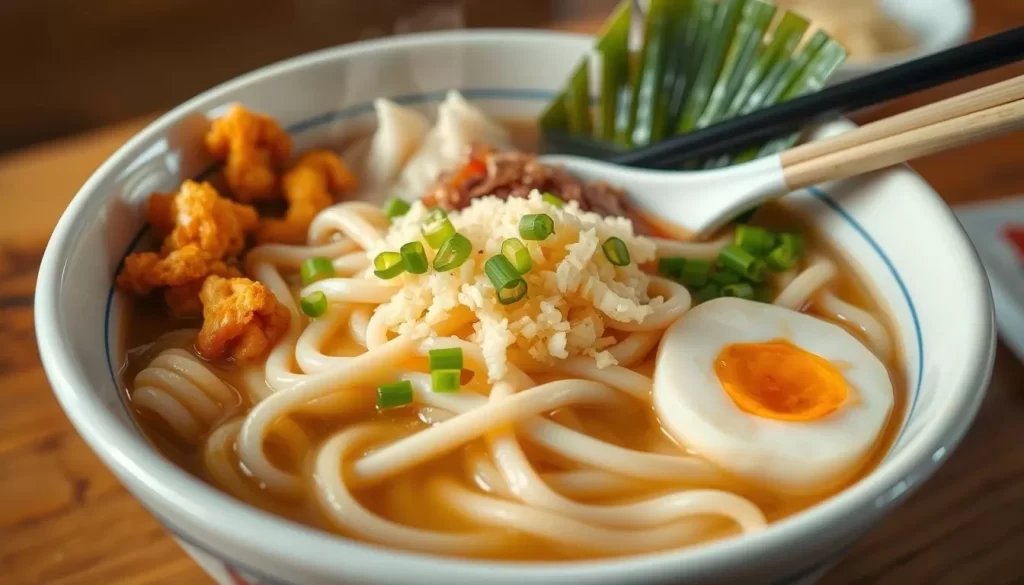
Art Islands: Naoshima and Ogijima
Takamatsu is also a gateway to the art islands of Naoshima and Ogijima, accessible by regular ferries from Takamatsu Port. These islands are renowned for their contemporary art museums, outdoor sculptures, and revitalized fishing villages, making for a fascinating day trip.
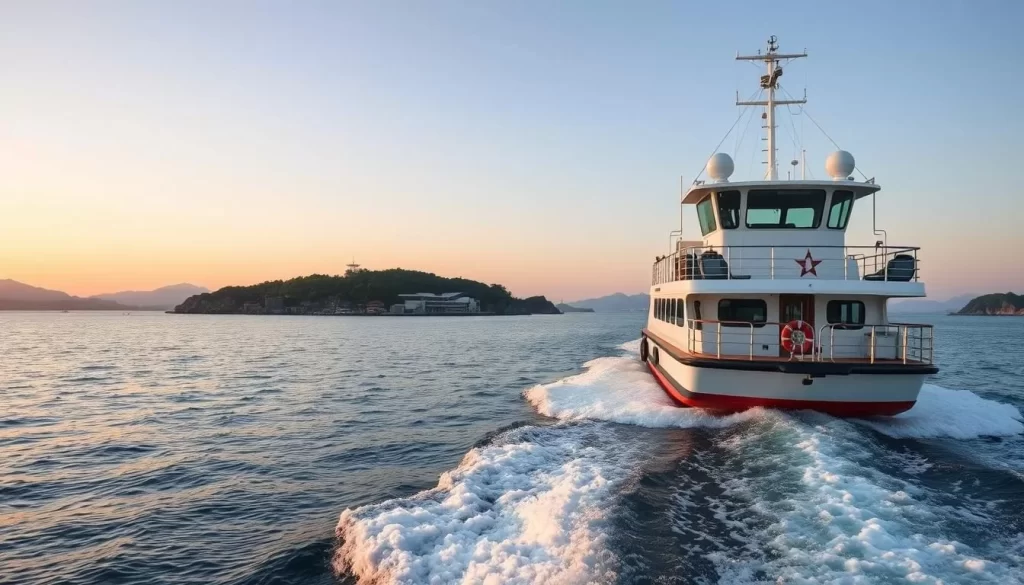
To make the most of your trip to Takamatsu, consider staying near the JR station and ferry terminal for convenience. Whether you’re exploring the gardens, sampling local food, or taking a train to nearby attractions, Takamatsu offers a memorable experience that showcases the best of Shikoku Island.
Matsuyama: Historic Castles and Ancient Hot Springs
With its historic castles, ancient hot springs, and scenic train rides, Matsuyama is a city that seamlessly blends tradition with natural beauty. As you explore this vibrant city, you’ll discover a plethora of experiences that showcase the best of Shikoku Island.
Matsuyama Castle: Feudal History with Panoramic Views
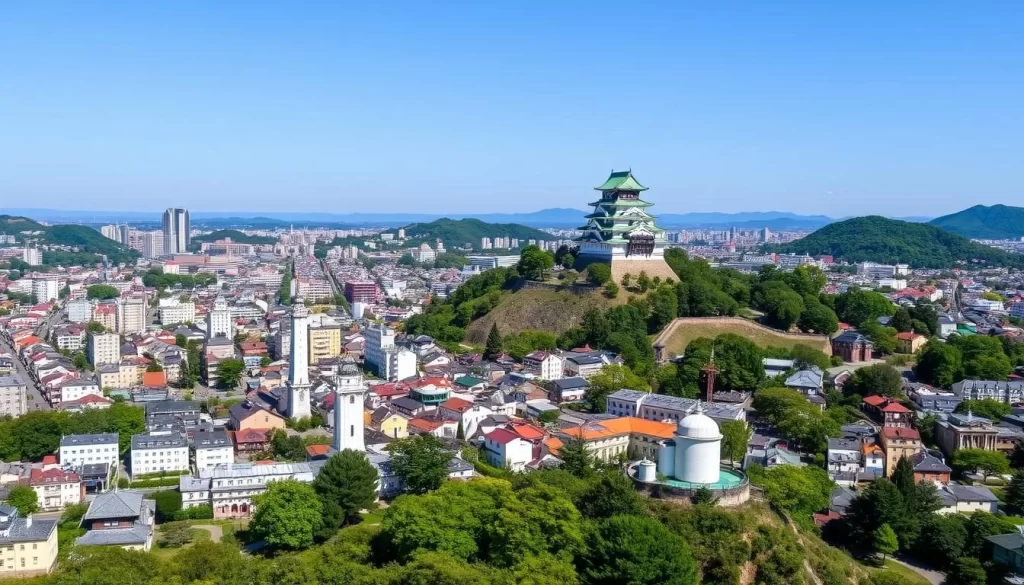
Matsuyama Castle is one of Japan’s twelve original castles, offering a glimpse into the country’s feudal past. You can reach the castle by ropeway or via a scenic hiking path that provides increasingly beautiful views as you ascend. The castle is particularly stunning during cherry blossom season, making it a must-visit attraction.
Dogo Onsen: Japan’s Oldest Hot Spring Bath

Dogo Onsen is Japan’s oldest hot spring bath, boasting over 3,000 years of history. It inspired the bathhouse in Studio Ghibli’s “Spirited Away” and continues to operate despite ongoing partial renovations. You can enjoy the bathing etiquette and different bathing options, from public baths to private rooms, making it a quintessential Japanese experience.
Ishiteji Temple: A Spiritual Stop on the Pilgrimage Route
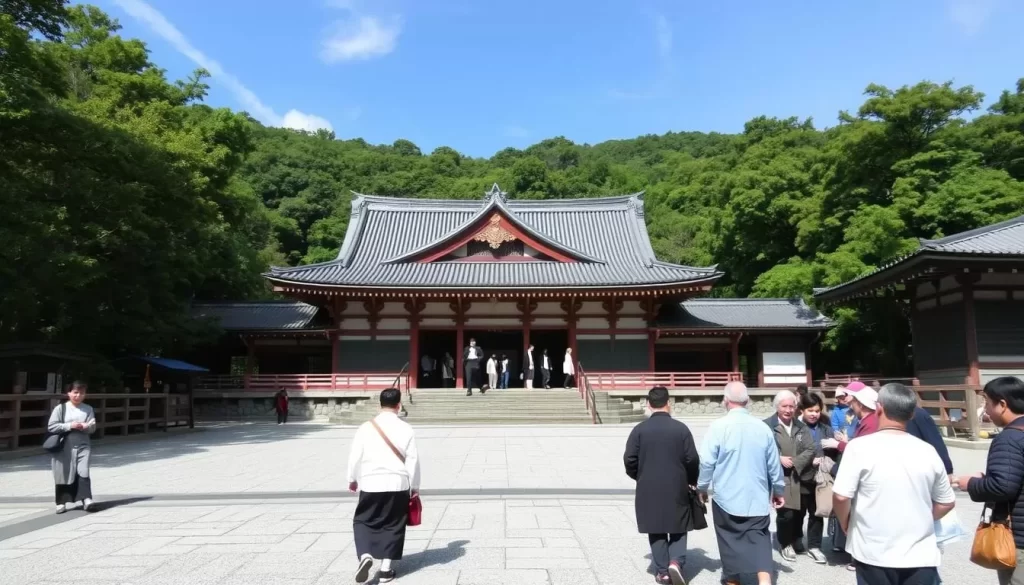
Ishiteji Temple is a significant stop on the 88-temple Shikoku Pilgrimage, featuring impressive wooden structures, mysterious cave passages, and elaborate stone carvings that create a mystical atmosphere. As you visit this temple, you’ll experience a deep sense of spirituality and connection to Japan’s rich cultural heritage.
JR Shimonada Station: Japan’s Most Scenic Train Stop
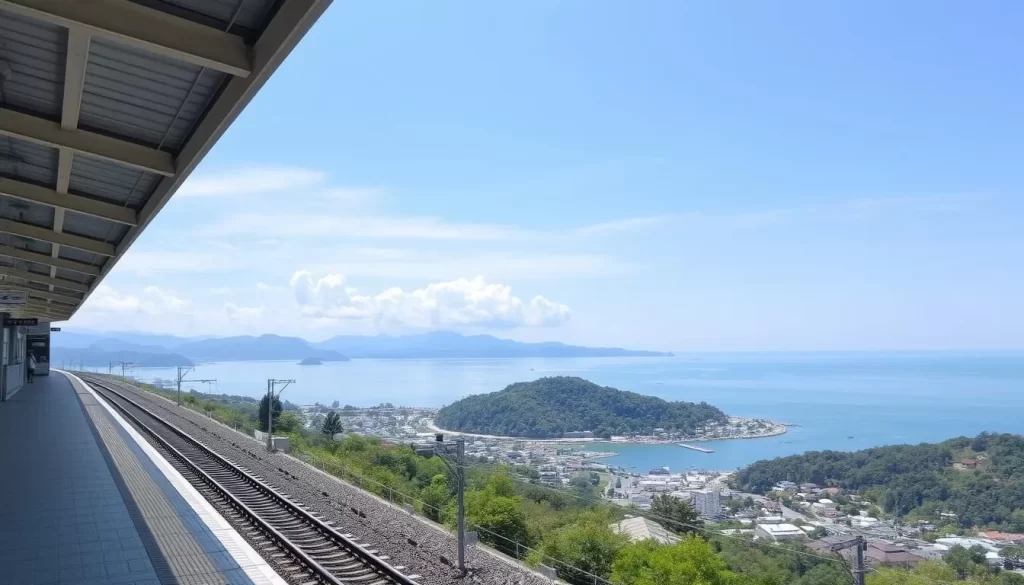
JR Shimonada Station is considered one of Japan’s most scenic train stops, especially at sunset. The train ride from Matsuyama takes about 50 minutes, with the last train back at 21:12. As you enjoy the views of the Seto Inland Sea, you’ll understand why this station is famous among train enthusiasts and nature lovers alike.
As you plan your trip to Matsuyama, consider staying in city hotels like Daiwa Roynet Hotel or traditional ryokan like Yamatoya Besso in Dogo Onsen. The city’s efficient streetcar system connects all major attractions, making it easy to explore without a car. With a day or two, you can experience the best of Matsuyama, from its historic castle to its rejuvenating hot springs and scenic train rides.
Shikoku Island, Japan: Best Things to Do in Kochi and Tokushima
Shikoku Island’s lesser-known cities, Kochi and Tokushima, are treasure troves of historical landmarks, cultural experiences, and breathtaking scenery. As you explore these cities, you’ll discover a mix of traditional Japan and modern attractions that make your trip to Shikoku Island truly unforgettable.
Kochi Castle and Historic District
Kochi Castle is one of only twelve original Japanese castles remaining in the country, featuring authentic wooden interiors and offering panoramic views of the city from its tower. You can visit this historic fortress and explore its surrounding historic district.

Katsurahama Beach and the Sakamoto Ryoma Statue
Katsurahama Beach is a crescent-shaped shore that offers beautiful coastal scenery and is home to a famous statue of local hero Sakamoto Ryoma. Although swimming is not allowed, you can enjoy the nearby Katsurahama Aquarium.
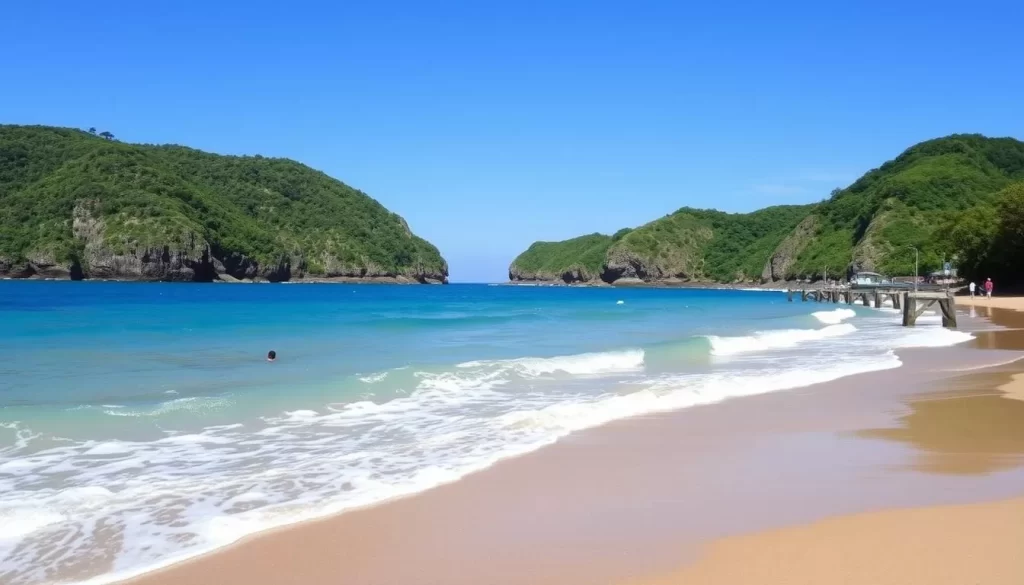
Katsuo Tataki: Sampling Kochi’s Flame-Seared Bonito
The city’s Hirome Market is where you can sample the region’s signature dish, katsuo tataki (flame-seared bonito), prepared right before your eyes and served with garlic, ginger, and citrus. It’s a culinary experience not to be missed.
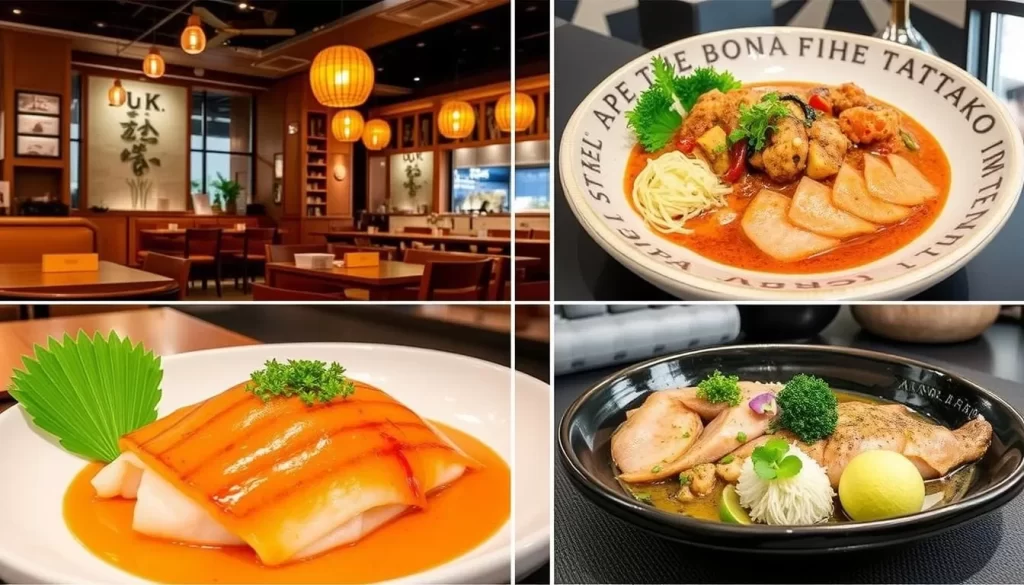
Naruto Whirlpools: Tokushima’s Natural Wonder
Witness the natural phenomenon of the Naruto Whirlpools, where tidal currents create massive swirling vortices up to 20 meters in diameter. You can view this spectacle from sightseeing boats or the Naruto Bridge Observatory.

Awa Odori: Experience Tokushima’s Famous Dance Festival
Experience Tokushima’s Awa Odori, one of Japan’s most famous dance festivals held annually in August. If you’re visiting outside the festival season, you can catch daily performances at the Awa Odori Kaikan.
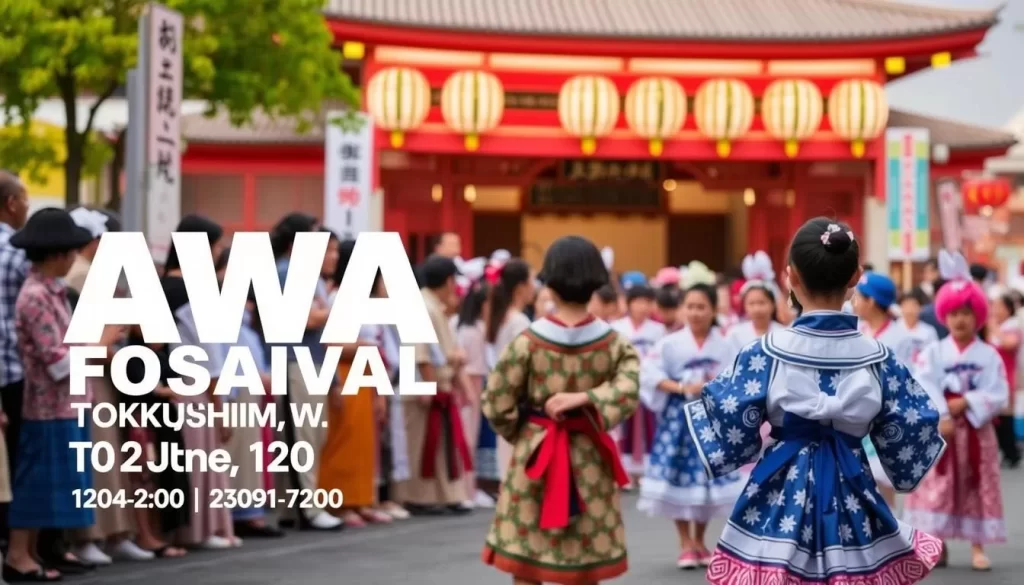
Navigating the transportation options in both cities requires some planning, especially in Kochi where bus schedules are limited, particularly on weekdays. However, the historical significance and cultural experiences in both regions make the effort worthwhile.
Iya Valley: Wild Nature and Traditional Experiences
Deep within Shikoku’s rugged landscape lies the Iya Valley, a region steeped in tradition and natural beauty. As you explore this hidden gem, you’ll discover a landscape that feels lost in time, with steep mountain slopes, deep gorges, and traditional villages.
To experience the Iya Valley fully, consider taking a train to Awa-Ikeda station, followed by a bus or car ride into the valley. This journey allows you to absorb the scenic views at your own pace, taking in the dramatic scenery that unfolds along the way.
Kazurabashi Vine Bridges
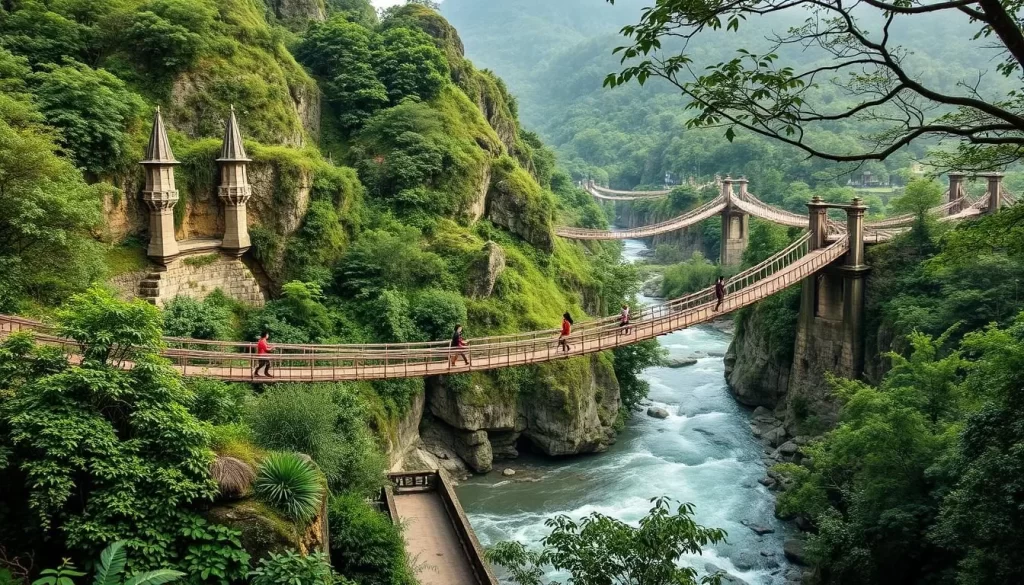
One of the valley’s most iconic attractions is the Kazurabashi vine bridges, originally built 800 years ago. As you cross these historic suspension bridges, you’ll feel a mix of excitement and trepidation due to their deliberately frightening design, with gaps between planks revealing the rushing river below.
Oboke and Koboke Gorges
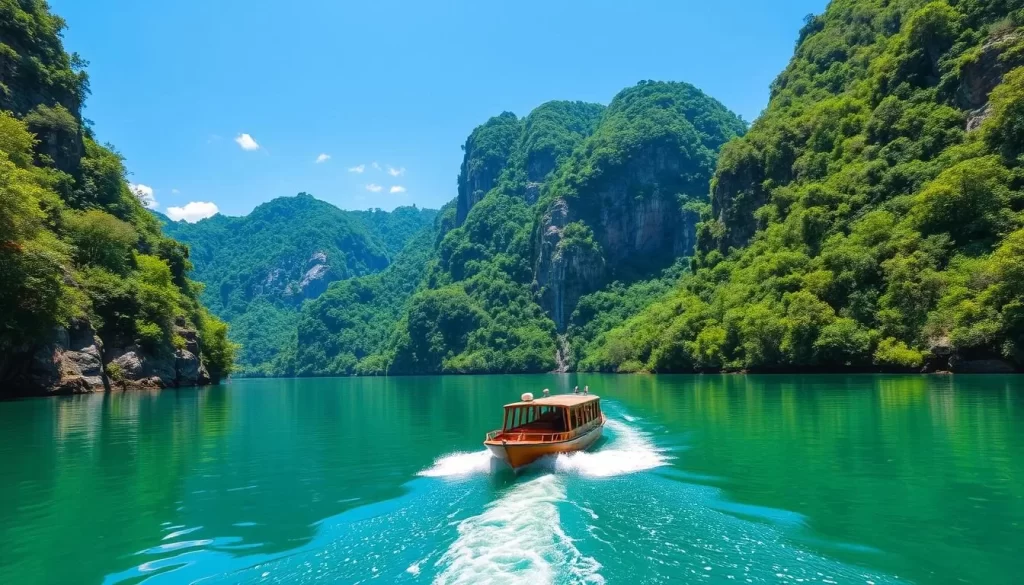
The Oboke and Koboke Gorges offer breathtaking scenery, with emerald-green waters flowing through narrow canyons of white crystalline limestone. You can experience this natural wonder via a “pleasure boat” cruise or, for the more adventurous, white-water rafting.
Traditional Farmhouses and Mountain Villages
Visiting traditional thatched-roof farmhouses in remote mountain villages is a highlight of any trip to the Iya Valley. Some of these farmhouses have been preserved as museums, while others offer overnight stays, allowing you to immerse yourself in rural Japanese culture.
Iya Onsen: Remote Hot Springs with Valley Views
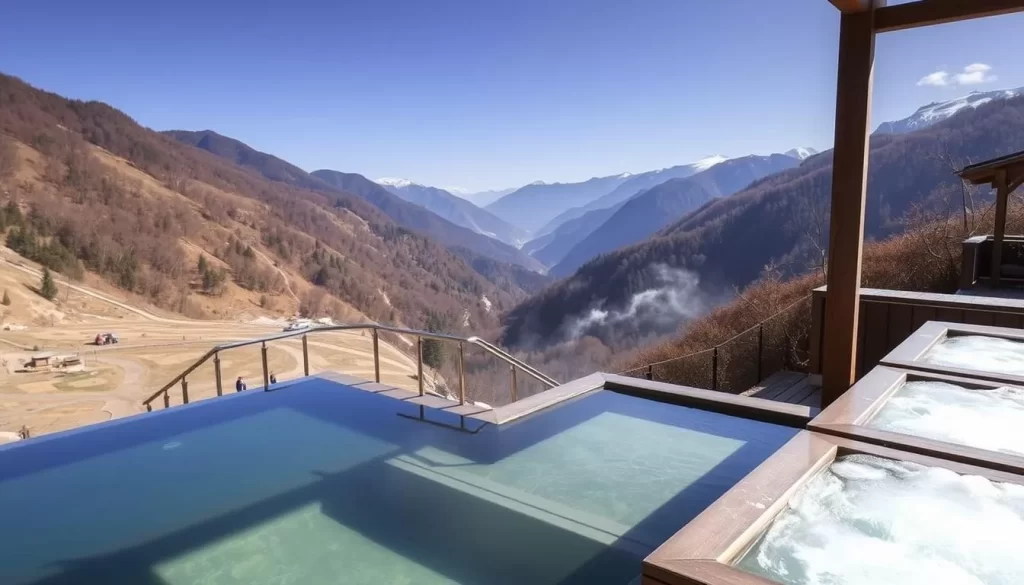
After a day of exploring, unwind at Iya Onsen, where open-air baths offer spectacular views of the surrounding mountains. Accessible by a private cable car that descends 170 meters into the valley, Iya Onsen provides a serene and secluded hot spring experience.
As you plan your trip to the Iya Valley, keep in mind that the region is vast and not easily explored in a single day. With limited public transportation, renting a car is advisable to reach the most scenic spots at your own pace. The valley’s unique history and culture, shaped by its history as a hideout for defeated warriors and political refugees, make it a fascinating place to explore over several nights.
Conclusion: Planning Your Perfect Shikoku Adventure
For travelers seeking an authentic Japanese experience, Shikoku Island is an ideal destination that combines history, culture, and nature. To plan your perfect Shikoku adventure, consider allocating at least 7-10 days. This allows you to explore the island’s diverse attractions without feeling rushed.
You can base yourself in 2-3 strategic locations like Takamatsu and Matsuyama for day trips or travel in a circuit around the island. Your transportation strategy is crucial; weigh the convenience of a rental car against the relaxation of train travel. Visit during seasonal highlights like spring cherry blossoms at Matsuyama Castle or summer’s Awa Odori festival in Tokushima.
Balance your itinerary between cultural experiences, natural wonders, and culinary adventures. Choose accommodations that suit your style, from city hotels to traditional ryokan or farmhouse stays. With careful planning, your Shikoku trip will be memorable.
The above is subject to change.
Check back often to TRAVEL.COM for the latest travel tips and deals.
